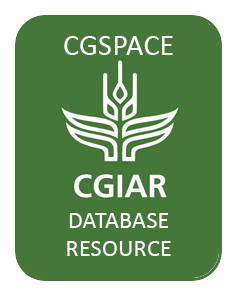Potato sector has a substantial role in Kenya's agriculture, contributing to food security, nutrition, and the national economy. While underscoring the sector's vast potential, this Technical Brief identifies the existing gap between current yields and achievable targets, highlighting…
We conducted a scoping review to explore existing rural finance practices and delivery models in
developing countries. The review aimed to examine past and present practices, explore types of
products/services and delivery models, identify knowledge gaps, and propose a framework for…
Under Sustainable Animal Productivity, one of the CGIAR initiatives, use of improved forages is key towards increased ruminant productivity. Given the diverse ecologies, matching species/cultivars with suitable agroecological zone is better done through multilocational trials. In addition to…
This work aimed at (1) reviewing published documents and reports to identify TIMPs with the potential for scaling to reduce GHGE, (2) identifying the constraints and challenges faced by different value chain actors in scaling aquatic food system TIMPs from the angle of low emission development…
Crop type mapping is essential to agriculture applications, including yield estimates, crop planting acreage statistics, agricultural market predictions, and land use change analysis that support relevant decision-making. Since 2008, the U.S. Department of Agriculture (USDA) National…
Women are key stakeholders in sustainable and resilient food systems, given their roles as primary food producers and household caretakers (Visser and Wangu 2021). Understanding how gendered roles affect food security and women’s well-being is essential for pursuing sustainable development (…
The whole world has experienced a series of global and local crises since 2019, and Kenya has been no exception. Before the COVID-19 pandemic and the Russian invasion of Ukraine, poverty and food poverty rates in the country had been declining steadily, falling from 52.3 percent to 36.1 percent…
Agriculture is key to economic growth and poverty reduction in Kenya as it plays a pivotal role in employment creation, food security, exports, and sustainable development. In 2019, it directly contributed 22.7 percent of GDP, accounted for 20.9 percent of total exports, and generated 43.3…
Contract farming is one potential mechanism that smallholder farmers in developing countries can use to participate in and benefit from domestic and global value chains (Okello and Swinton 2007; Barrett et al. 2012; Minot and Sawyer 2016; Ruben 2017; Ton et al. 2017). Linking smallholder farmers…
The 2010s were a decade of strong economic development in Kenya. Gross domestic product (GDP)—an indicator of the economy’s size—expanded by an average of 5 percent per year (KNBS 2022). This exceeded population growth and helped raise household incomes, leading to a decline in poverty…
The livestock sector plays a major role in the Kenyan food system, contributing about 12 percent of the country’s overall GDP and 40 percent of agricultural GDP, and employing about half of the agricultural labor force (Kenya Markets Trust 2019a). The livestock sector also contributes 22…
This book has adopted a food systems framework as a new way of conceptualizing and designing food policies and research. Looking beyond agriculture and value chains makes it possible not only to turn food systems into a driver of economic transformation but also to better include health,…


